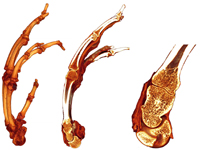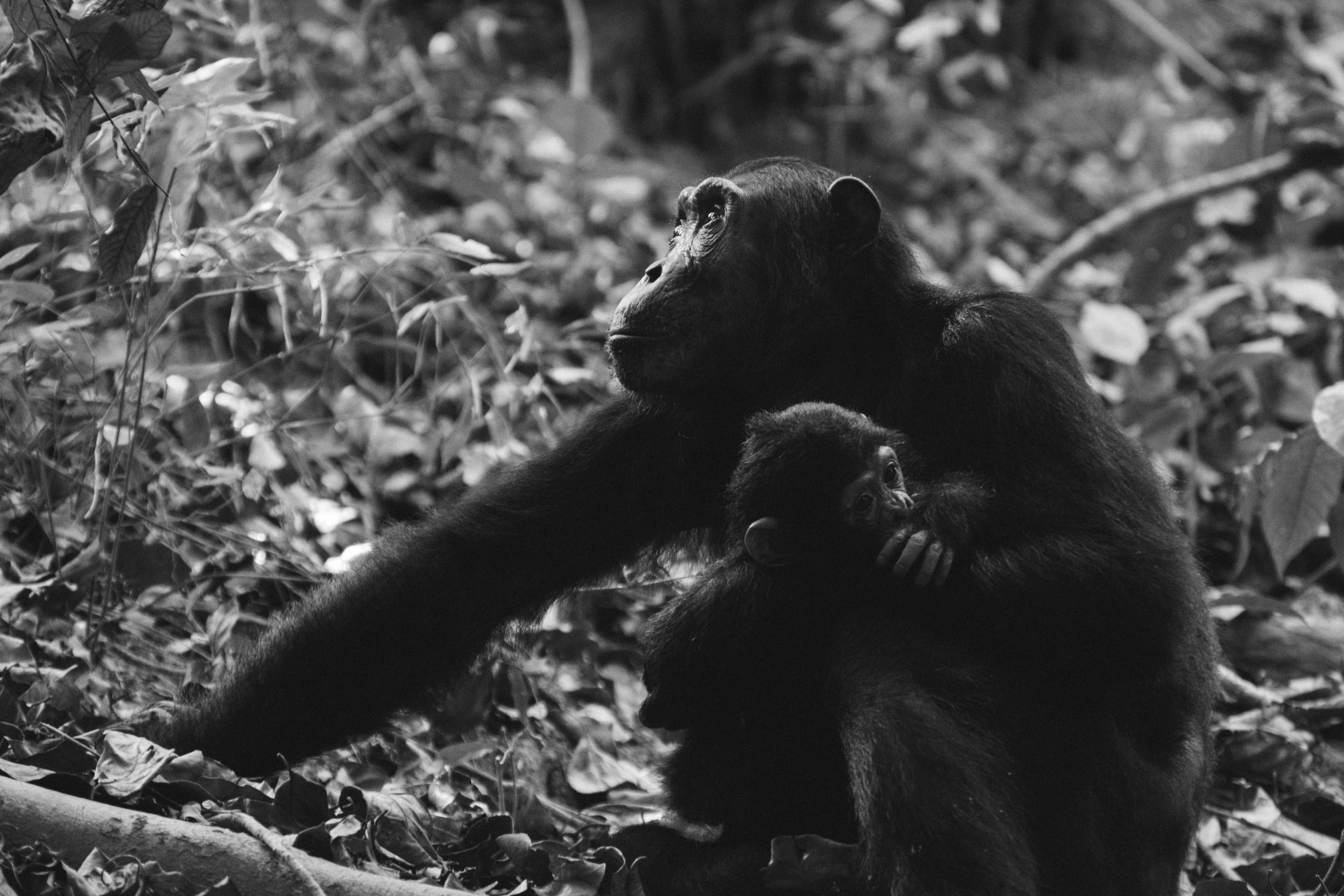Our work is at the leading edge of major debates in biological and evolutionary anthropology.
We pursue a variety of projects linked by evolutionary theory, with particular strengths in osteology and functional morphology of human and non-human primates; the fossil record of human evolution; primate behaviour and ecology; and multidisciplinary approaches to understanding human life history evolution and behaviour.

The 3D model of a chimpanzee hand derived from microCT data, showing cross-sections of the internal cortical and trabecular structure inside.
Recent research within our group includes studying the evolutionary history of human and primate anatomy, including the evolution of permanent tooth enamel and the function and cell biology of human deciduous teeth (Mahoney); the developmental processes underlying tooth shape and trends in dental evolution in the human fossil record (Skinner); studying the internal bone structure and functional morphology of the postcranial skeleton of our early human ancestors, including recently discovered South African fossils (Australopithecus sediba and Rising Star) (Kivell and Skinner); male mating strategies (including aggression) among wild great apes (Newton-Fisher); testing biological markets and other models of cooperation using chimpanzee grooming (Newton-Fisher); identifying cultural and social influences on chimpanzee tool-use (Humle); investigating the proximate and ultimate causes of alarm calling behaviour in tufted capuchin monkeys (Wheeler); using stable isotopic analyses to reconstruct diet, disease and behaviour in past modern human populations (Fahy and Deter); exploring human life history, including the role of environmental risk in shaping reproductive schedules (Johns), and applications of evolutionary theory to social policy (Johns).
The biological anthropology research area is linked to the Skeletal Biology Research Centre, the Durrell Institute of Conservation and Ecology and the Living Primates Research Group.
